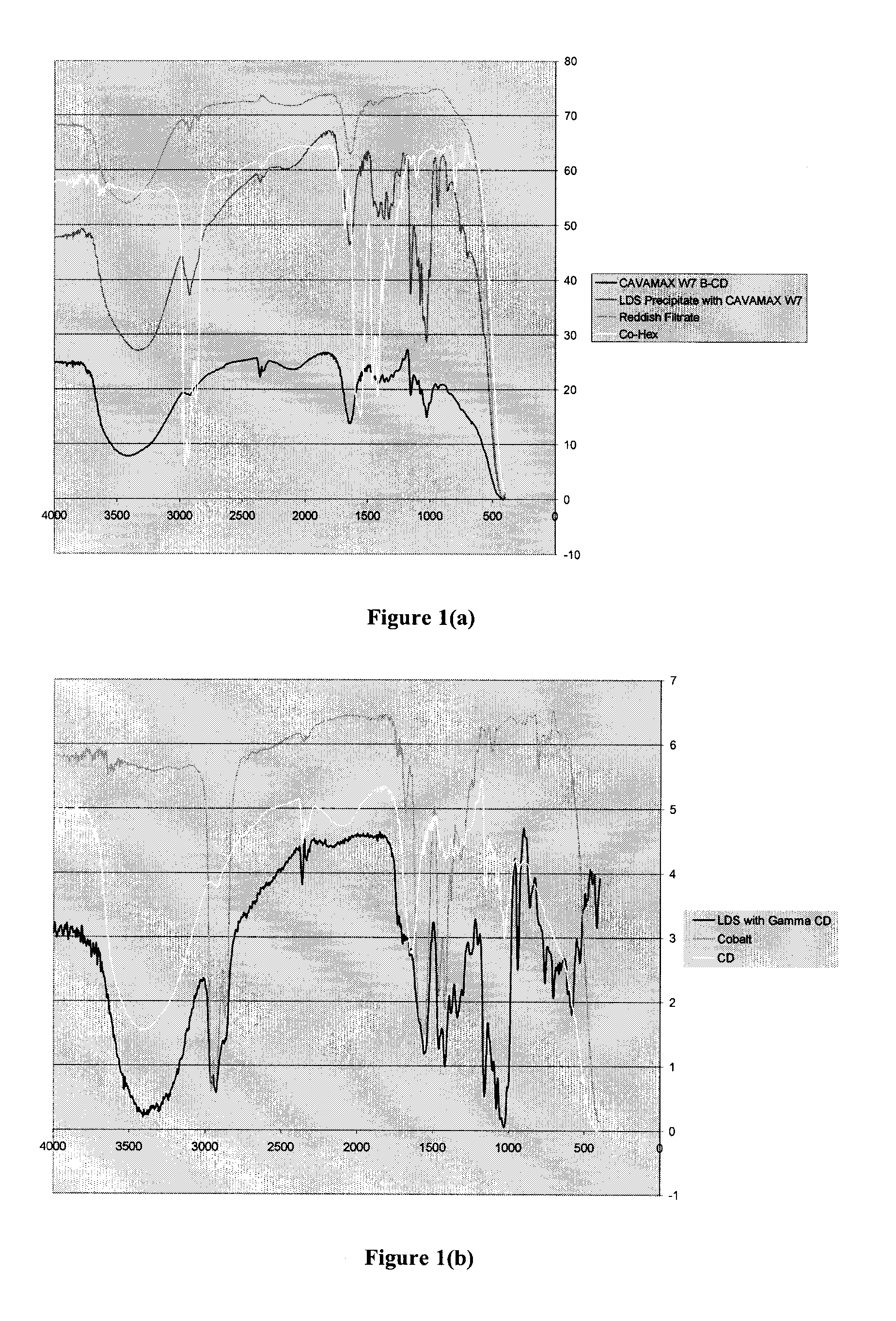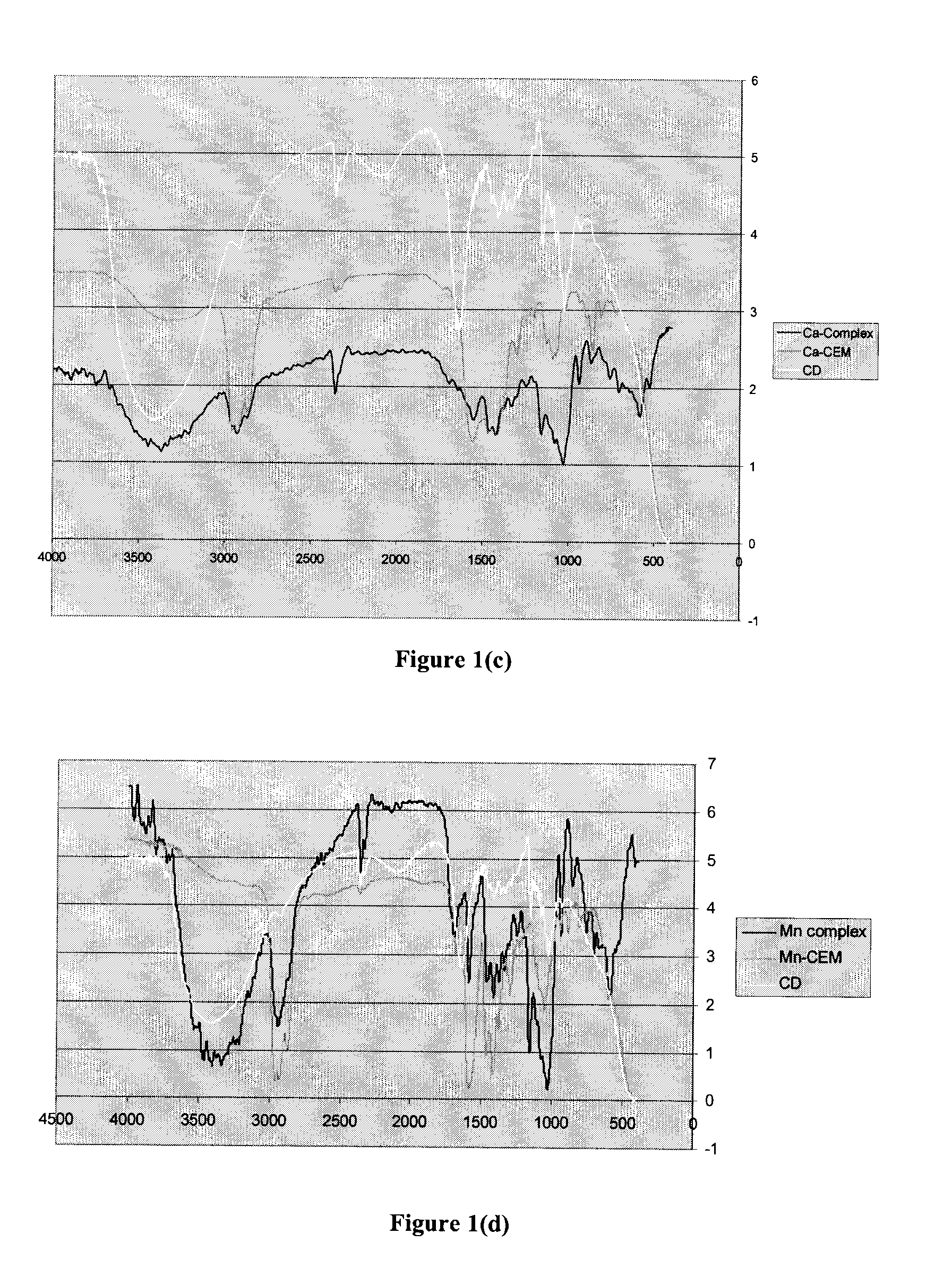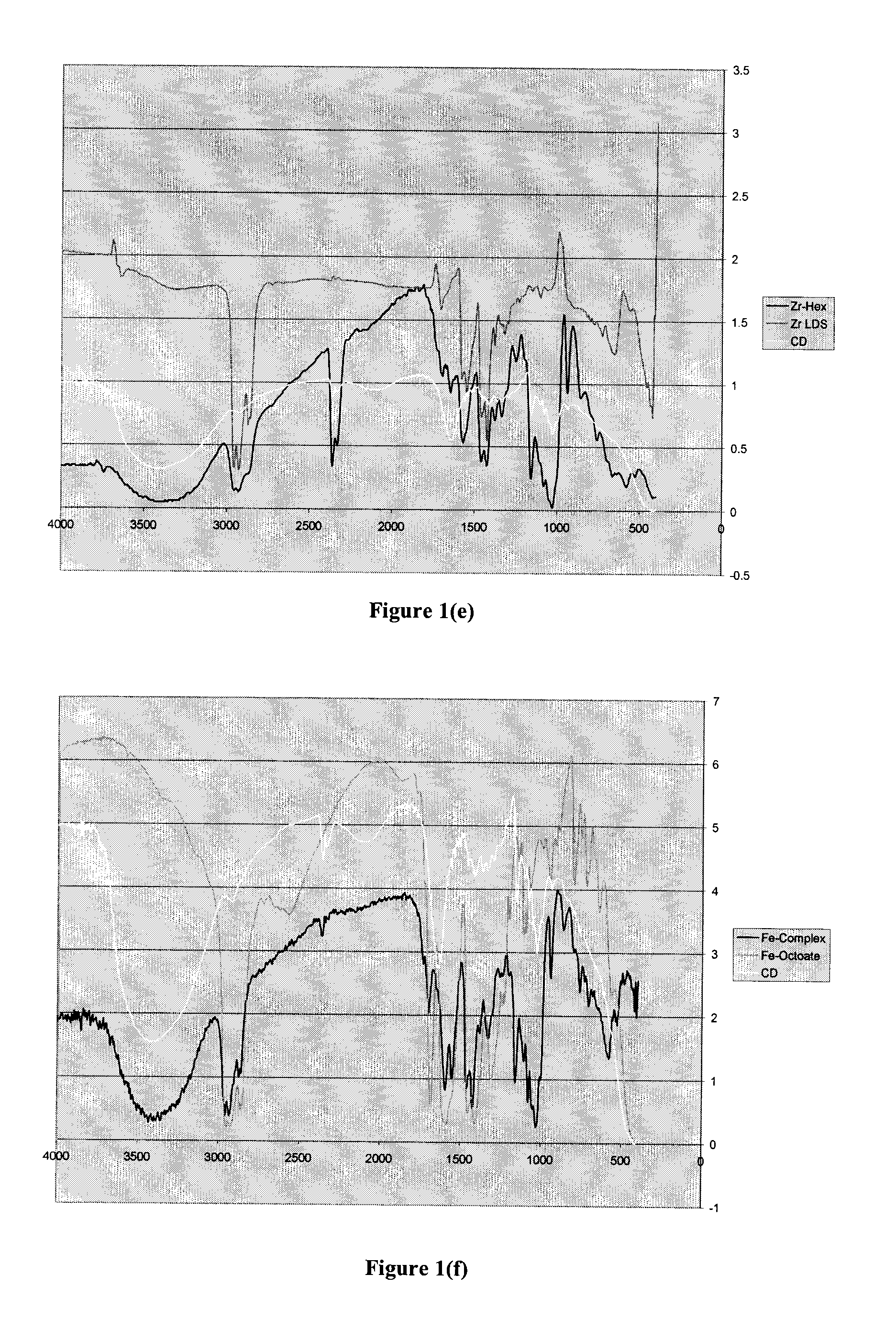Stabilized drier for alkyd-based compositions
a technology of drier and composition, applied in the direction of organic compound/hydride/coordination complex catalyst, physical/chemical process catalyst, coating, etc., can solve the problems of lead-based driers being replaced with driers, unacceptably long drying time, etc., to improve drying performance and dry time stability, and reduce drying time
- Summary
- Abstract
- Description
- Claims
- Application Information
AI Technical Summary
Benefits of technology
Problems solved by technology
Method used
Image
Examples
example 1
Cyclodextrin Synthesis and Formation of Inclusion Complexes
1.1 Cyclodextrin Synthesis
[0097]Cyclodextrins can be produced from almost any starch source. Processes for preparing cyclodextrins are disclosed in Cyclodextrins and Their Complexes, ed. H. Dodziuk, Wiley-VCH Inc., 2006.
[0098]In general, to prepare cyclodextrins, starch slurry was digested with α-amylase. The α-amylase was then deactivated and a cyclodextrin glycosyl transferase, was added to catalyze the formation of cyclodextrins from the digested starch.
[0099]Toluene (2000 g) was then added to the thus-prepared product (2000 g) and mixed for around 1 hour at 100 rpm.
[0100]The product was analyzed by gel permeation chromatography (GPC) to determine the molecular weight distribution of the cyclodextrins in the mixture. The GPC chromatogram of the cyclodextrins thus prepared suggested that the molecular weight distribution of α, β and γ structures were comparable to the cyclodextrins found in commercial products such as Febr...
example 2
Selection of Optimal Cyclodextrin Size and Solvent for Inclusion Complex Formation
[0113]The cyclodextrin mixture prepared in Example 1.1 was a mixture of α-, β- and γ-cyclodextrins. The yield of the drying reaction (i.e. autoxidation and cross-linking) and the efficacy of the inclusion complex was dependent on the total concentration of inclusion complex present. α-, β- and γ-Cyclodextrins are of different sizes and thus have different sized cavities. It was felt that the efficacy of the stabilized drier could be improved by first identifying which oligomer of cyclodextrin provided the highest yield of inclusion complex with the transition metal drier and then identifying the most suitable solvent system for preparation of the inclusion complex.
[0114]A commonly used cobalt-based drier, Cobalt Hex-CEM® 12% (OM Group, Inc.) was chosen as a representative transition metal drier.
2.1 Solvent Selection for Formation of Inclusion Complex with Cobalt-based Drier
2.1.1 Formation of Inclusion ...
example 3
Determination of Dry Time Stability
[0137]The inclusion complexes of cyclodextrin and transition metal drier (referred to as “stabilized drier”) were tested for their applicability with various alkyd compositions.
[0138]The stabilized driers containing cobalt, manganese, iron and cerium, were tested in two different forms, as aqueous suspensions and as dry powders (as prepared in Example 2). The water based suspensions were prepared by addition of 23 g of γ-cyclodextrin to 100 g of deionized water, and 23 g of metal drier.
3.1 Alkyd Compositions for Use in Dry Time Stability Tests
[0139]For the dry time stability tests of Example 3.2, a series of three samples were prepared for each of the compositions prepared in Example 3.1.[0140]1. Control: no primary drier added;[0141]2. Standard: commercially available primary drier added;[0142]3. (a) With stabilized drier in powder form; and / or (b) with stabilized drier in aqueous solution / suspension form.
[0143]For each alkyd composition, the stan...
PUM
| Property | Measurement | Unit |
|---|---|---|
| charge | aaaaa | aaaaa |
| hydrophilic | aaaaa | aaaaa |
| time | aaaaa | aaaaa |
Abstract
Description
Claims
Application Information
 Login to View More
Login to View More - R&D
- Intellectual Property
- Life Sciences
- Materials
- Tech Scout
- Unparalleled Data Quality
- Higher Quality Content
- 60% Fewer Hallucinations
Browse by: Latest US Patents, China's latest patents, Technical Efficacy Thesaurus, Application Domain, Technology Topic, Popular Technical Reports.
© 2025 PatSnap. All rights reserved.Legal|Privacy policy|Modern Slavery Act Transparency Statement|Sitemap|About US| Contact US: help@patsnap.com



